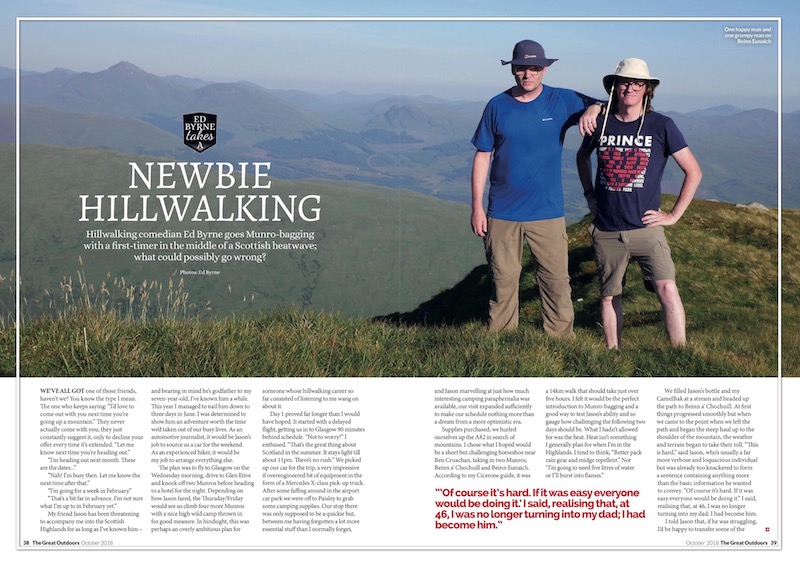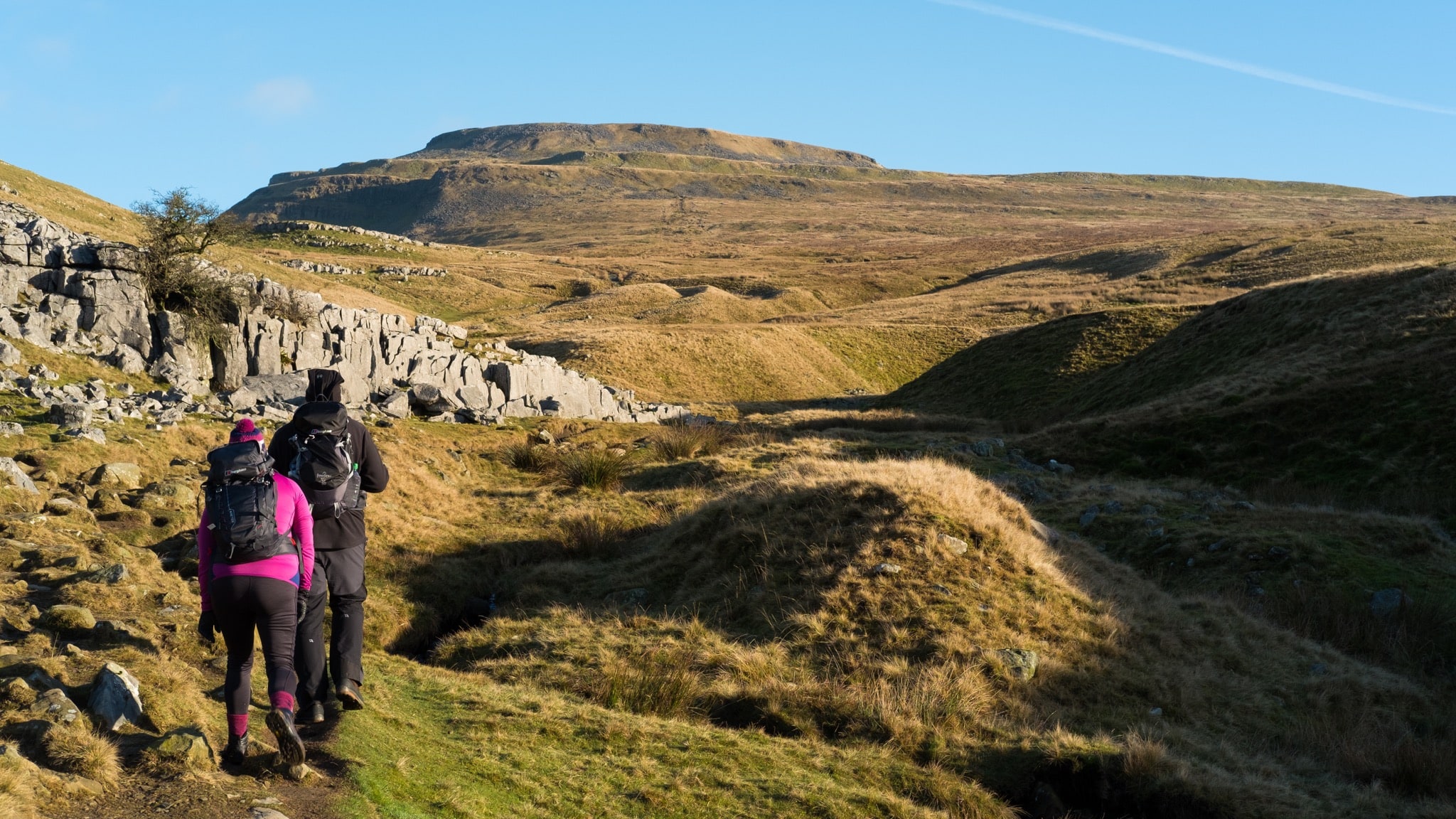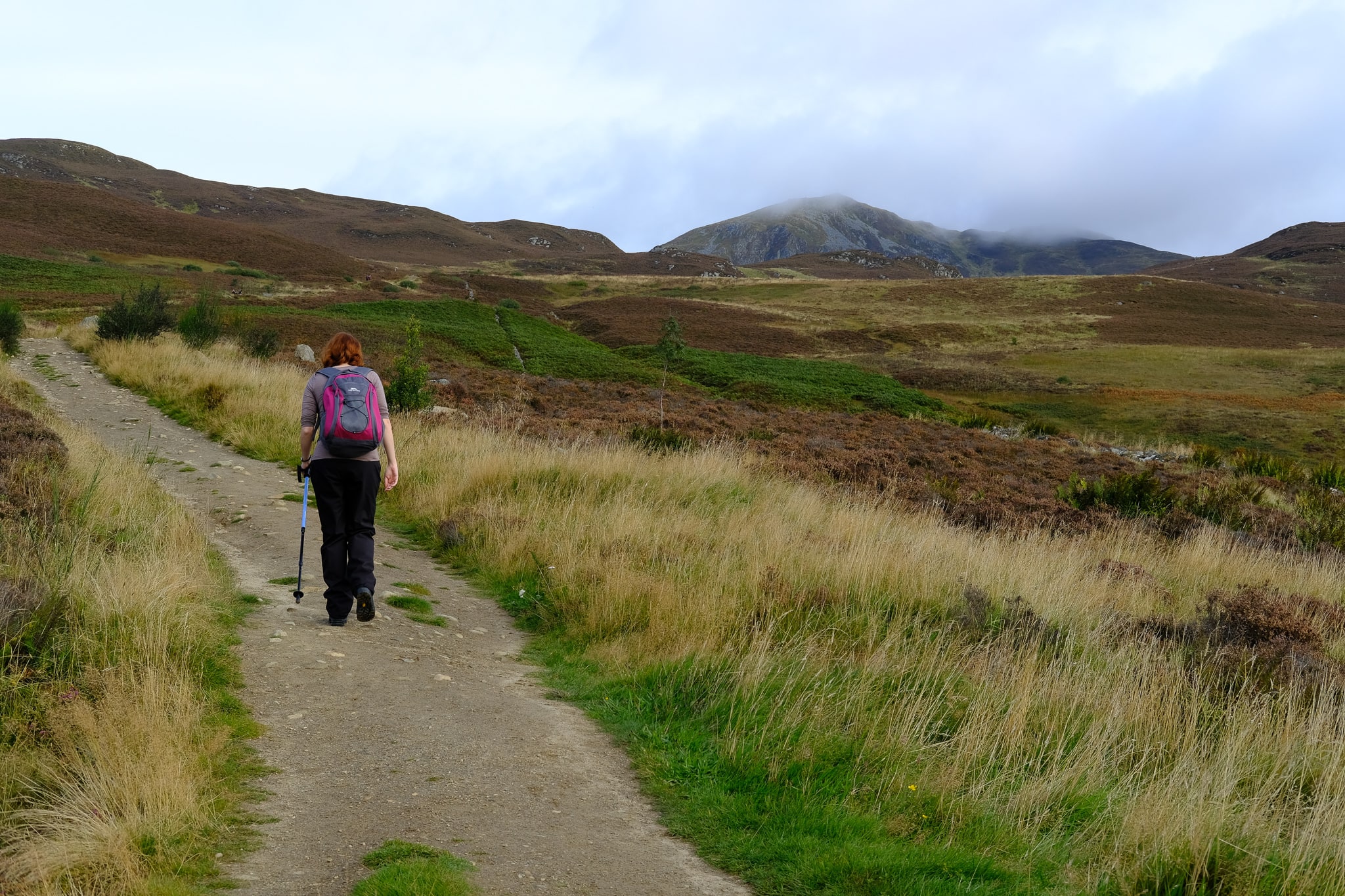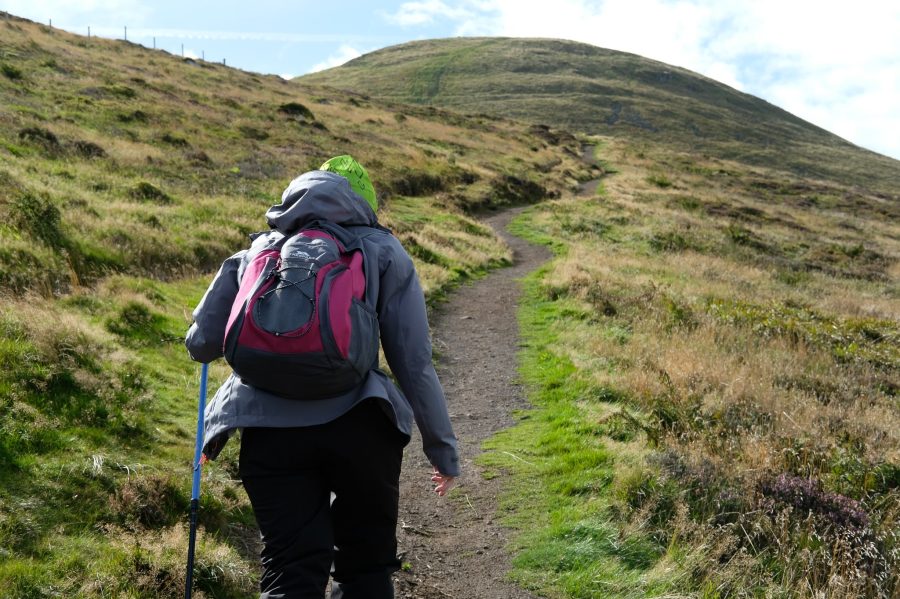Keen to get your friend up a mountain? Here are some strategies to make the experience as painless as possible…
In the October 2018 issue of The Great Outdoors, available now, comedian and hillwalker Ed Byrne takes his friend Jason hillwalking – in the middle of a Scottish heatwave. What could possibly go wrong? Find out by picking up a copy of our latest issue, but for now here are our top tips for taking a newbie hillwalking.

1. Find the fun
If you’re active on social media, it’s likely that your friends already have a vague idea of what you get up to on the hills, but they might not realise where the fun comes in. Status updates such as ‘Woke up at 5am to a cloud of midges and torrential rain!’ don’t exactly scream enjoyment. While you don’t want to paint an unrealistic view of hillwalking when you’re trying to lure an unsuspecting newcomer to the pastime, if you’ve found a possible victim – ahem – walking buddy, now’s the time to talk up the good bits: the unbelievable views, the sense of achievement, the satisfaction of learning something new.
If all else fails, dead-cert tactics include a) casually mentioning the great craic at your favourite mountain pub, and b) emphasising the adventure cred they’ll gain on Instagram.
2. Start small
Remember what it felt like when you were a newcomer to hillwalking? Even modest hills felt huge, slopes felt steeper, the weather more menacing. Throwing your friend in at the deep end isn’t a great idea, so select your objective accordingly.
A good first hill is:
- Not too high. Don’t head up Scafell Pike or Ben Nevis unless your friend is an athlete. A good altitude to aim for is 3–600m and take it from there.
- Accessible. Choose somewhere easy to get to. If the hill is several hours’ drive away, followed by a long walk-in, your friend’s enthusiasm might have cooled by the time they start the actual walk.
- Not too boggy. Look for well-trodden, well-constructed paths.
- Varied. An ideal first hill includes some woodland walking, open moorland, maybe an easy ridge, and a fine summit.
- Has an excellent view. Mid-height hills surrounded by bigger peaks often have the best views of all.

Views like this, from the summit of Loughrigg in the Lake District, will make newbies beg for more
© Alex Roddie
Suitable examples include:
- The Pap of Glencoe, Scotland
- Loughrigg, Lake District
- Chrome Hill, Peak District
- Moel Siabod, North Wales
- East Lomond, Scotland
- Check out the ‘Smaller Hills’ section in our 40 Finest Mountains for more ideas
3. Get the map out
If you’re anything like us, planning is half the fun, and planning the walk together is a great way to build up excitement. Now’s the time to get the OS map out and pore over it with your friend. It’s the perfect opportunity to point out interesting landscape features and other hills, hopefully stoking their curiosity – they may have no idea such a wealth of wild landscape even exists in the UK, or at the very least they may never have seen a visual representation of it before.
4. Lend them some kit
Summer hillwalking on a good forecast requires less kit than you might think, especially if you’re going with an experienced friend, but there are certain items they will need to be equipped with.
Footwear is most important. Newcomers tend to be happiest with supportive boots, but trainers with grippy soles are suitable for most hills in summer conditions. If in doubt, opt for boots.

Good waterproofs and footwear are vital – even for a one-off trip
© Alex Roddie
A decent waterproof jacket is also vital. Many hillwalkers who have been around for a while end up with multiple jackets, so if you take the same size, consider lending them your old jacket.
Other items are less important – any old rucksack will do, for example – but it’s critical that they don’t wear jeans, and cotton T-shirts are best avoided too.
5. Take it slow, and be honest about false summits
As a rule of thumb, hillwalkers tend to be fitter than average, which means that your non-hillwalking friend probably isn’t capable of walking as fast or as far as you are. Drop the pace a little, but be adaptable – if they’re coping well, let them go ahead and set the pace themselves, which will soon teach them how slow and steady tends to be better over the course of a long walk.
Resist the temptation to say “We’re nearly there!” if you aren’t. False summits can be discouraging for newcomers, so involve them with the navigation throughout and be honest about what’s still left to tackle.

False summits can be discouraging © Alex Roddie
6. Teach them something new
It could be how to take a compass bearing, how to identify upland birdlife, or how to find safe drinking water on the hill – people like learning new skills, and if you teach them how to do something new they’ll probably come back for more.
7. Give them something to work towards
Hopefully, if you’ve played your cards right, your friend has enjoyed their first mountain and is curious to try another. Now’s the time to mention some of the adventures that could be waiting in their future if they choose to gain more experience – the Lochaber Traverse, perhaps, or the TGO Challenge. Again, emphasise the fun and the personal satisfaction. The difference now is that, having stood on their first summit and tasted success themselves, this time they can really visualise it. Play your cards right and you might have gained a walking partner for future adventures.








